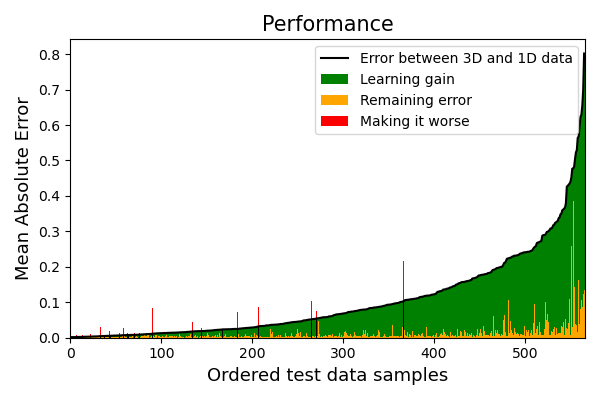A multidimensional AI-trained correction term for the 1D approximation with Gaussian process regression for Airborne TDEM data
More details can be found in the manuscript (https://arxiv.org/abs/2311.13998 or https://doi.org/10.1016/j.cageo.2024.105602), published in Computers & Geosciences.
Full 3D inversion of time-domain electromagnetic data requires immense computational resources. To overcome the time-consuming 3D simulations, we propose a surrogate model trained on 3D simulation data and predicts the approximate output much faster. We exemplify the approach for two-layered models.
We construct a surrogate model that predicts the discrepancy between a 1D two-layered subsurface model (low fidelity data, LF) and a deviation of the 1D assumption (high fidelity data, HF).
The LF data is efficiently computed with a semi-analytical 1D forward model. The HF data is generated with, e.g., SimPEG (https://simpeg.xyz/).
The results are encouraging even with few training samples, but obtaining a high accuracy requires more data. We view the performance as a learning gain, representing the gain from the surrogate model while acknowledging a residual discrepancy.
The code model.py describes the step-by-step process in constructing a relative error correction term for replacing expensive 3D modelling
- Reading the data (parameters
X(describing the subsurface model),LF(1D approximation),HF(3D simulations)) - The proposed data transformations (standardizations, log-like transforms)
- Conversion to relative error and splitting the data into a training and test dataset
- Dimensionality reduction by (1) Functional Data Analysis followed by (2) Principal Component Analysis
- Training the surrogate models (one for each principal component)
- The wrapper
make_predictionis used to make predictions. It has a built-in warning that warns the end-users if the supplied parameters (about the subsurface model) are outside the trusted parameter space. - An example is shown at the bottom
The method:
Deleersnyder, W., Dudal, D., & Hermans, T. (2024). A multidimensional AI-trained correction to the 1D approximate model for Airborne TDEM sensing. Computers & Geosciences, 188, 105602.
